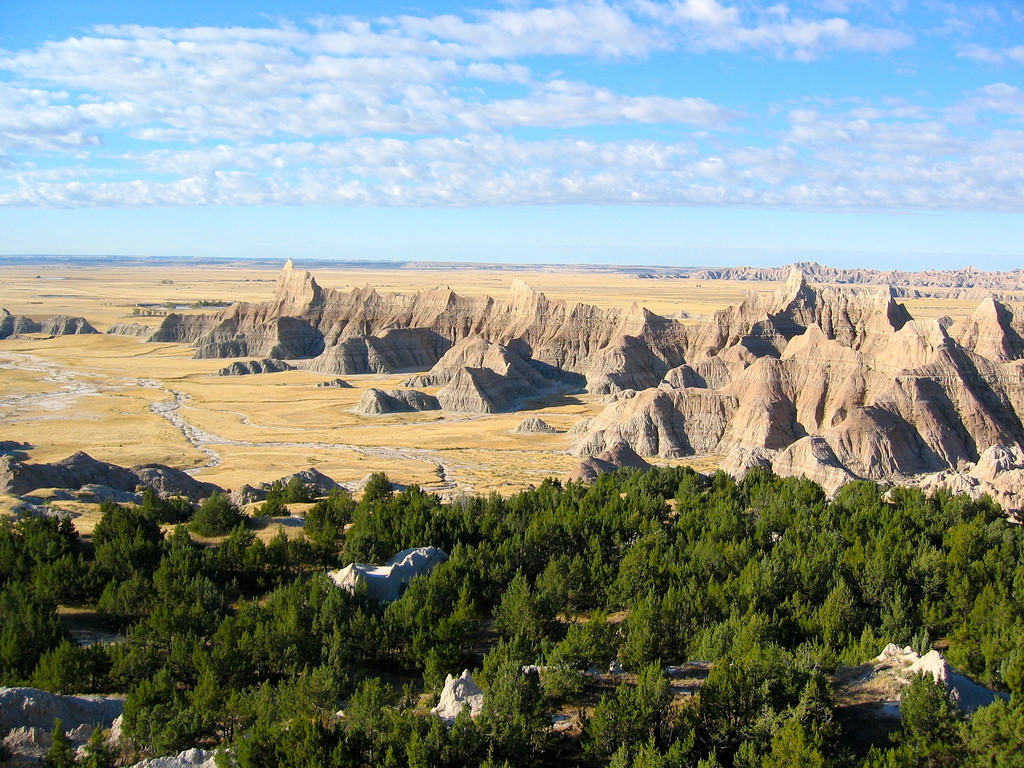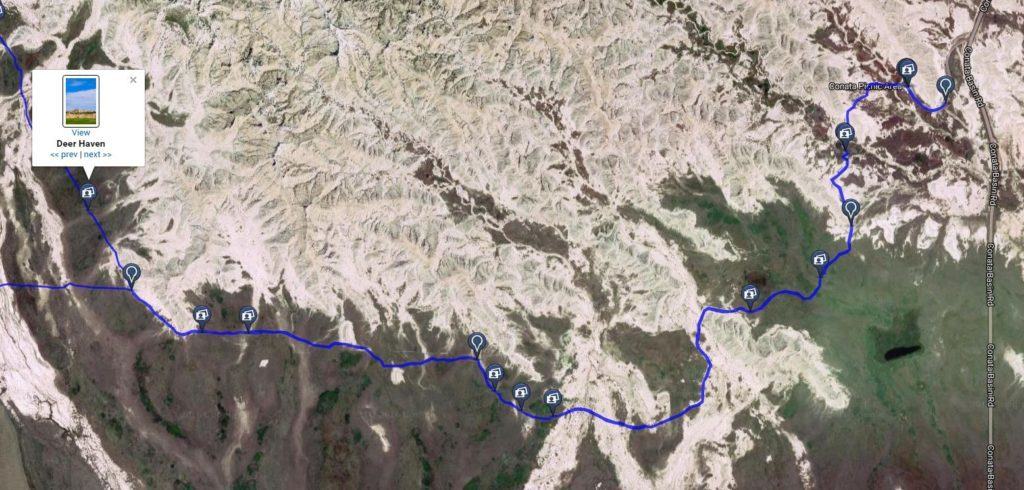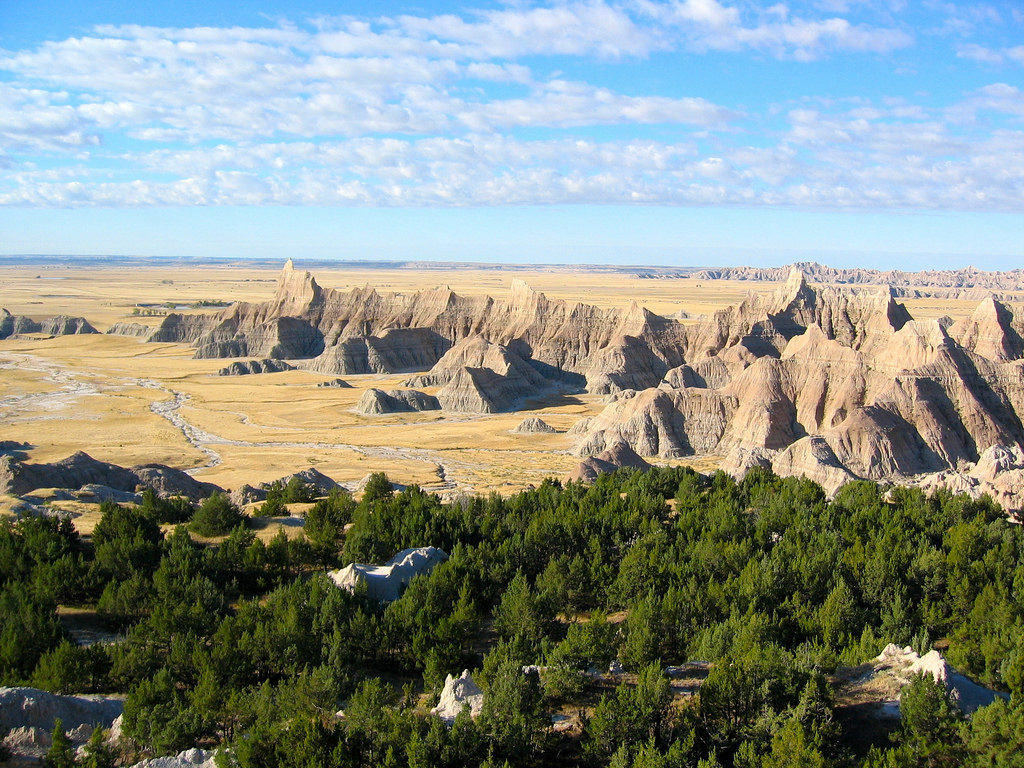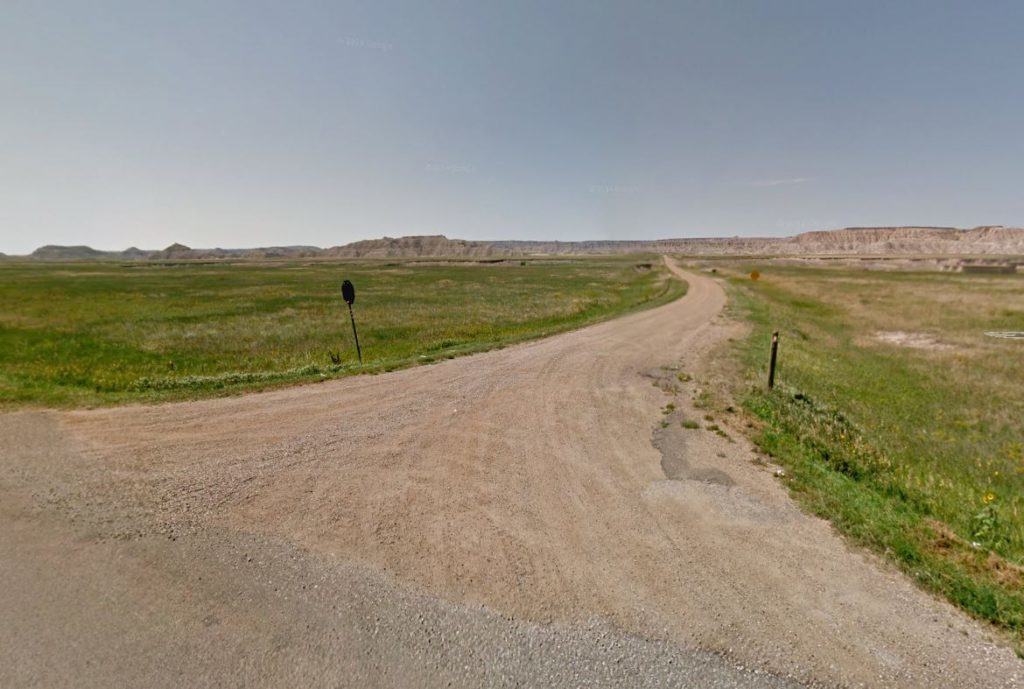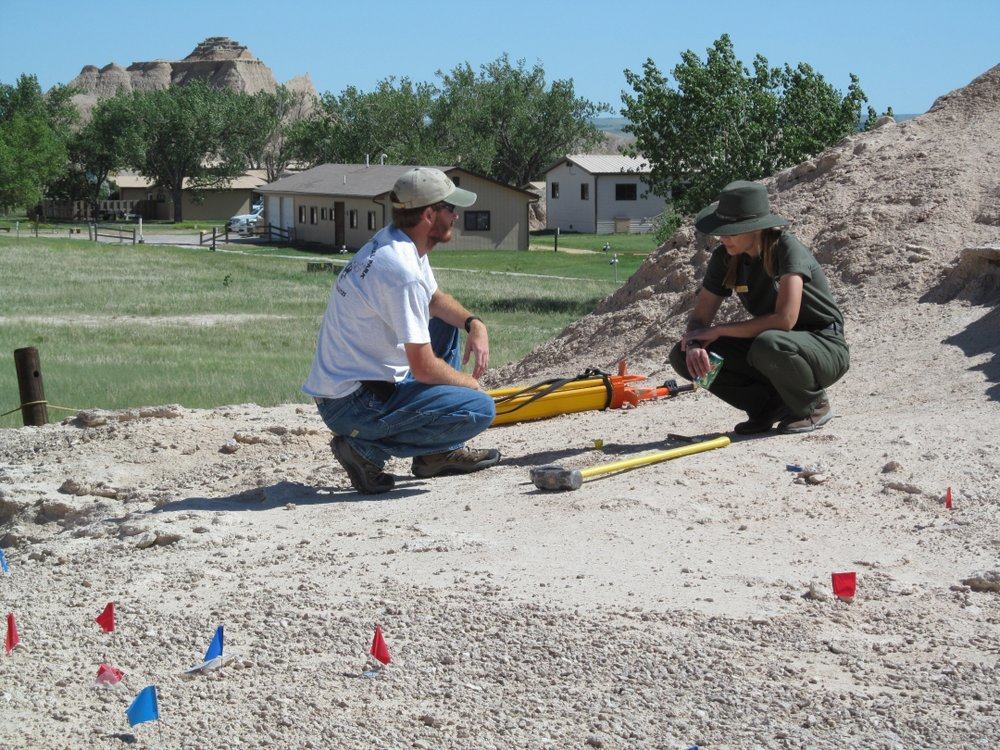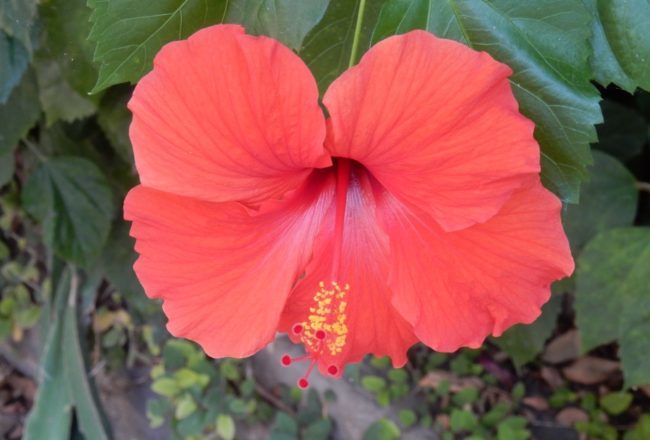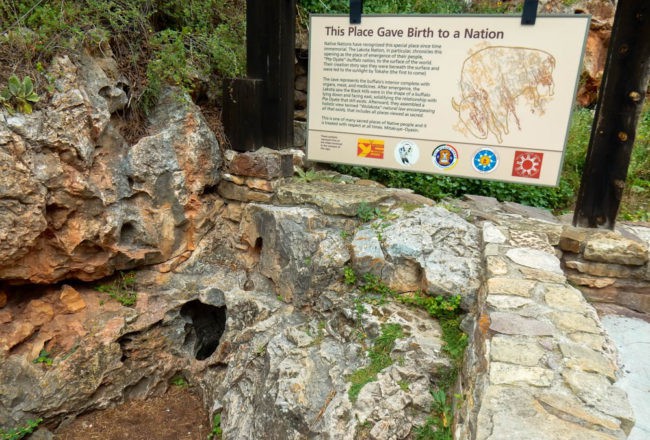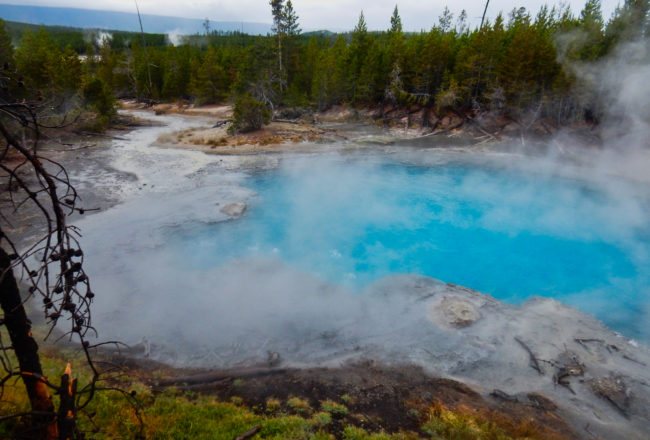Back in August, I remember my giddy school-girl excitement in the days leading up to our visit to South Dakota and Badlands National Park. I poured through a ton of online material, books, and maps. I wanted to see it all, but then we got an offer for work-camper positions. Also known as work-camping, we would gain full-hookups and laundry in exchange for cleaning, landscape maintenance, and general labor. After talking it over, both Hitch and I agreed to the deal, but it left less time to see the things I wanted to. In the end, my to-do list was half undone. Rather than let it ferment in dark recesses of my hard drive, I thought I’d post it here as a reminder where to go should I return to South Dakota again.
Deer Haven
Just west of Yellow Mounds Overlook and just off the Cornata Picnic Area resides a trail hardly touched by Badlands National Park tourists. There aren’t that many trail maps, the location is kind of hidden away, and typically most don’t know about it until they get there. I learned about Deer Haven by word of mouth, from a ranger at Glacier National Park who use to work at Badlands. When a park ranger tells you about his favorite trails, I figure it’s probably worth the effort.
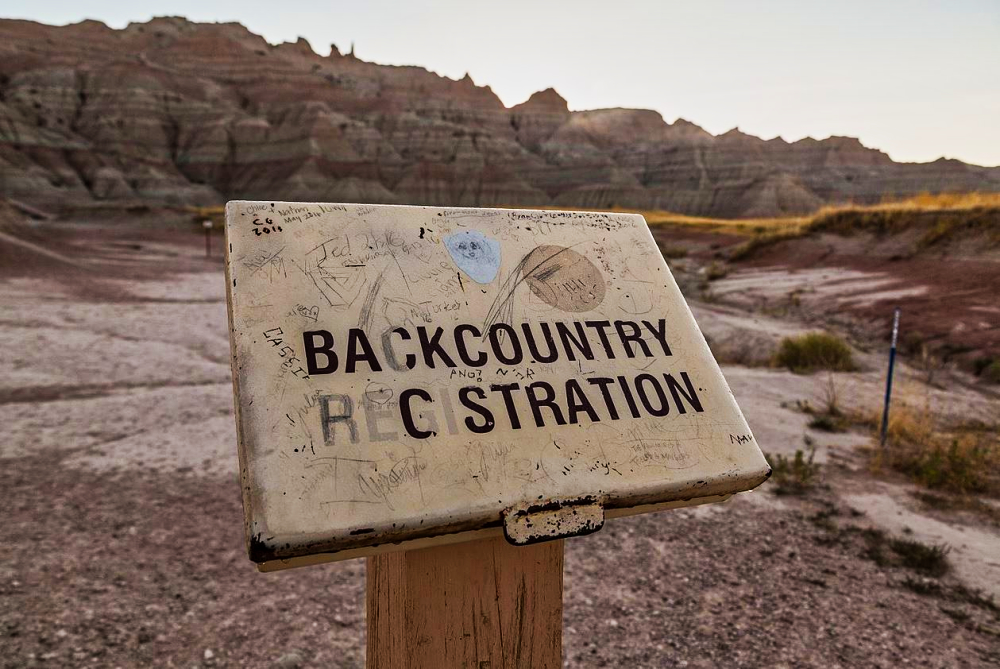
Deer Haven Trailhead at Cornata Picnic Area
Apparently, backpackers usually include Deer Haven in a three-day and 24-mile journey into Sage Creek Wilderness. To visit just Deer Haven, it would take us a half-day hike to-and-back trip. That sounded very doable and worth our time. Sadly, I wasn’t able to include it our adventures. According to the descriptions, Deer Haven is juniper forest oasis located in a hollow in the Badlands Wall. Much like Cliff Shell, it holds enough water for trees to grow, but instead, it relies upon a slump, which is a geological term for a section of the cliff which suddenly fell down from the face of the wall. That slump seems to be filled with material that retains more water than most.
The trailhead itself starts at the end of the Cornata Picnic area cul-de-sac, which is south on Cornata Road from Scenic Loop Drive. Just look for a backcountry trail register. The total length of the hike takes 3 miles round trip. The path weaves and rolls below the Badlands Wall, skirting a few prairie fields and then scrambles up onto the shelf of the slump.
Sheep Mountain Table
Another location I really wanted to visit but didn’t get to was Sheep Mountain Table. The South Unit, also known as the Stronghold Unit of Badlands, lies within the Pine Ridge Reservation of the Oglala Lakota Nation. I found a PDF flyer found on the National Park Service website, which turned out the be the best information out there: “Exploring the Stronghold District”. Not many people visit the Stronghold Unit since much of the area is only accessible by rough dirt roads or by foot.
My primary reason for wanting to visit Sheep Moutain Table is for the amazing views of White River Badlands Valley, located to the east and south of the mountaintop. To the West, and on a perfectly clear day you can see all the way to the Black Hills. A ranger described the geological formations as similar to Bryce Canyon.
Places with history and religious meaning always attract me. To the Oglala native peoples, Sheep Mountain Table is a holy place, where pilgrims go for vision quests and leave offerings to spirits and ancestors. Located nearby Sheep Mountain Table resides Stronghold Table, a 3-mile-long plateau, reached only by crossing a narrow land bridge just wide enough to let a wagon pass. Just before the Massacre at Wounded Knee in 1890, some 600 Sioux gathered to perform one of the last known Ghost Dances, a ritual in which the Sioux wore white shirts that they believed would protect them from bullets. Stronghold Table and many other places in the South Unit require permission to visit, so it’s best to visit the White River Visitor Center before going.
Saber Site
Paleontologists find a lot of fossils at Badlands National Park. But in 2010, a seven-year-old girl found a well-preserved skull of the saber-tooth cat. The skull was more than 30 million years old, and lead to the opening the Paleontology Lab inside of Ben Reifel Visitor Center. The Saber site itself is nearby the visitor center. It’s a small site and by the time I remembered to ask about it, we were already on the road heading toward Sage Creek.
Camping in Sage Creek
On the edge of the Sage Creek Wilderness, there’s a campground were bison often wander through. You can access this free and primitive campground via the unpaved Sage Creek Rim Road. Campers have pit toilets and covered picnic tables available, but you have to bring in your own potable water. Sites at the Sage Creek Campground are first-come-first-serve basis, and with only 10 spots, that fills up quickly during high season. Since we have cats, I’m reluctant to spend a night anywhere other than in our Airstream.
I Will Return
And so dear reader, I’ve given you all that I know of Badlands National Park. If you have the time and effort to visit these places before I do, please let me know what you think of it and share a few pictures as well. In the meantime, I have many other places in America to visit.
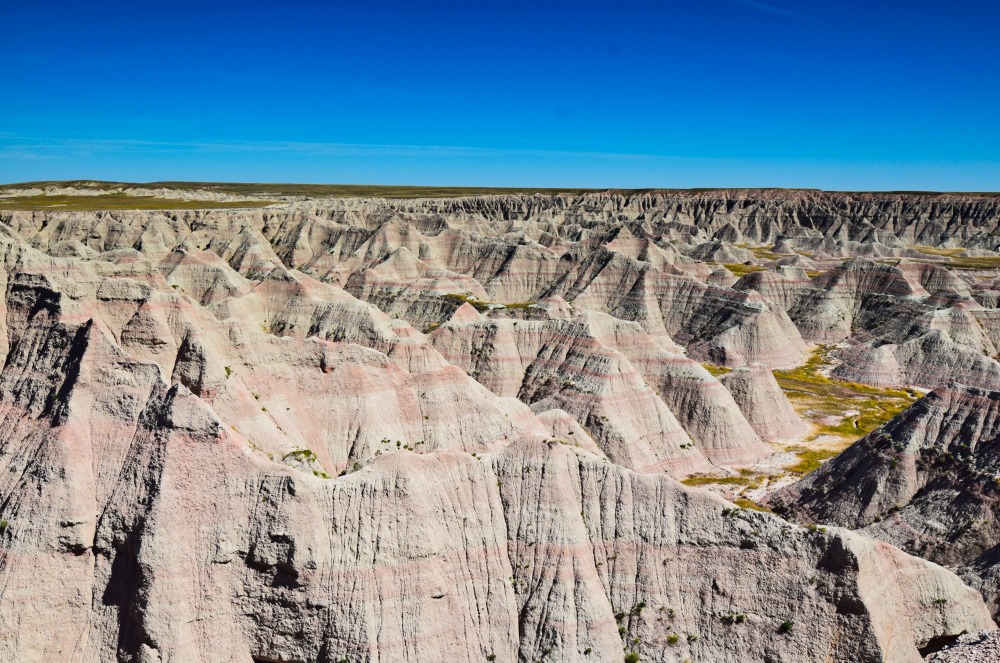
Badlands is the Best
